He found a bomb under a playground - and there were 176 more
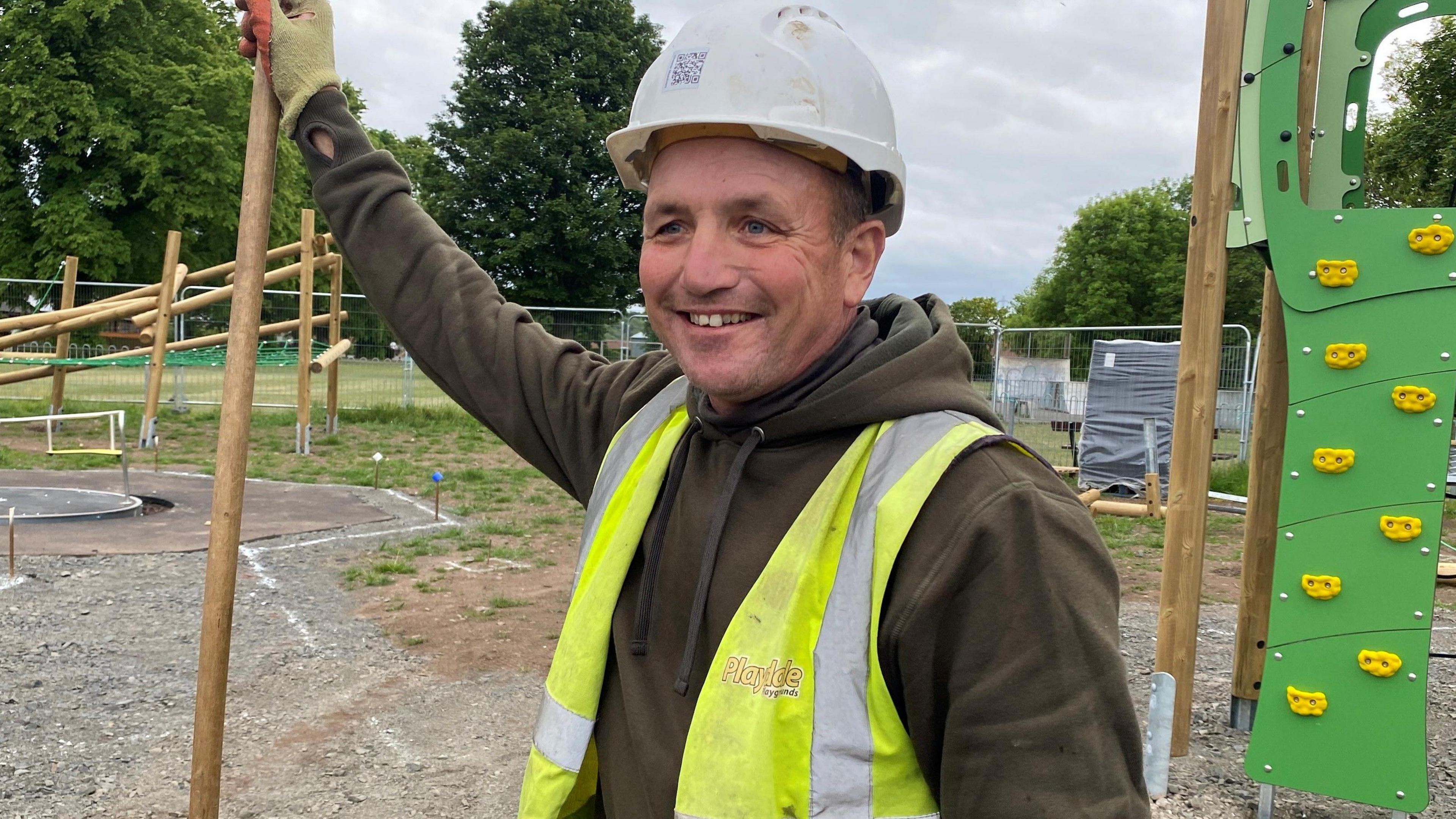
Steven Parkinson uncovered the first of 177 bombs in Scotts Park
- Published
For decades, generations of children have had a blast tearing round a Northumberland park and playground, all the while oblivious to a cache of World War Two bombs buried beneath them. How did the devices get there and why did no-one know?
Steven Parkinson had just begun work in January installing new equipment at Scotts Park in Wooler, a town encircled by the rolling Cheviot Hills.
As he was digging, his eye caught something in the ground that was "a bit suspicious".
"It was quite a shock because it definitely looked like a bomb, but we didn't know if it was live or anything," he remembers with a small chuckle.
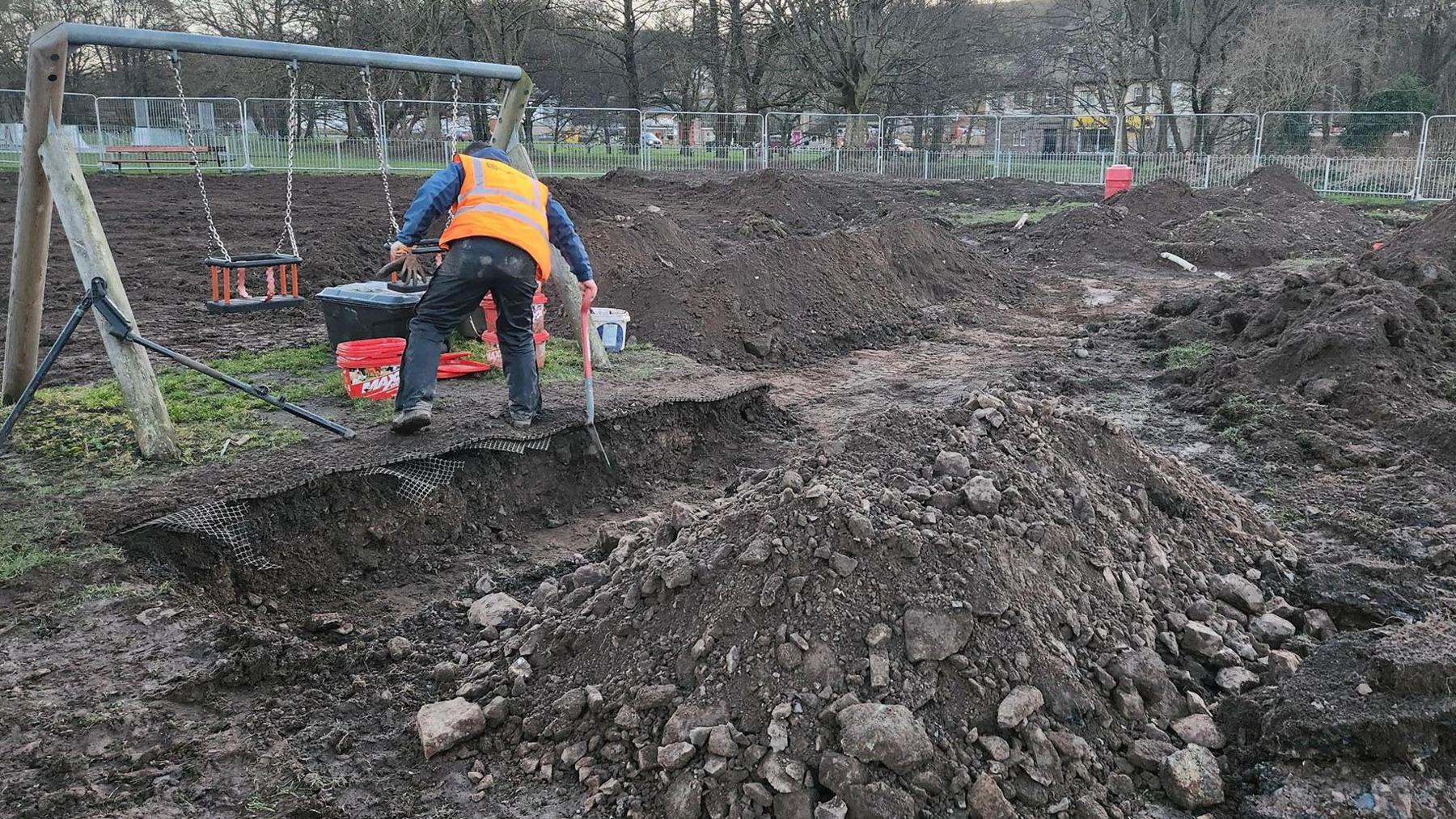
The first two days of excavations by Brimstone unearthed so many bombs the whole park had to be dug up
Steven's company got in touch with the clerk of Wooler Parish Council, Kerren Rodgers, but the find was equally baffling to the authority.
"Dealing with a suspected bomb in a playground is not exactly something they cover in the clerk's manual," she says with a wry smile, "but we sealed off the site straight away."
Wooler councillor Mark Mather recalls: "It was almost exciting.
"I went along to the site and it definitely looked like a bomb, but obviously at that point nobody had any idea of the extent of what we were going to find."
An Explosive Ordnance Disposal team arrived from Catterick Garrison and confirmed it was indeed a bomb from World War Two but, thinking it was an isolated find, renovations resumed the next day.
Until another device surfaced.

Kerren Rodgers knew of no corporation manual to instruct on bomb disposal
As with any building work, finding evidence of past life and indiscretions is not uncommon, especially in town parks.
Dallan Tan, from the Association of Play Industries, says he has found "vintage whisky bottles, railway sleepers, barbed wire, sex toys and a gun, but never bombs" while installing play equipment.
Companies today would usually check if there had been "any military or industrial activities on the site" he says.
They would also do dig tests and CAT (Cable Avoidance Tool) scans, but in the 1980s, when the park was first installed, "health and safety standards would have been very different".
"I don't think anyone is to blame, they were just really, really unlucky."
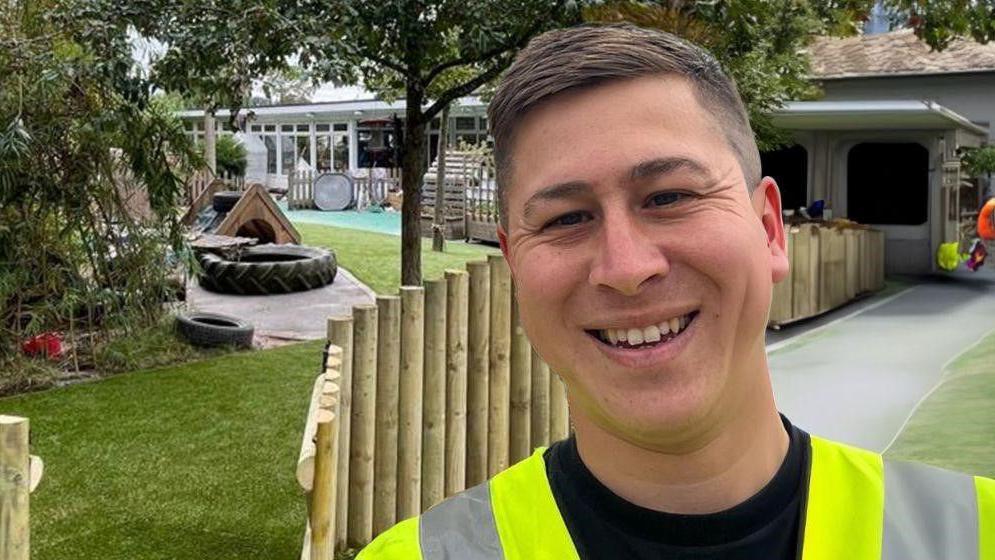
Dallan Tan can list a host of interesting finds in playparks, but not bombs
In Wooler, the decision was taken to call in Brimstone, one of a handful of companies in the UK which specialises in the removal of wartime ordnance.
Since it was founded in 2016 its staff have removed more than 200,000 items from sites across the UK, so associate director Adam Tanner says he has learnt "not to be surprised by anything in this job".
Brimstone began with "delicate hand digging" around the initial pit and, over a two-day period, found a further 90 practice bombs which were used to train and drill bomber crews and pilots.
They were not live, but did carry a charge.
"What we noticed is that they were uniformly placed and stacked in rows," Adam says. "It was clearly done carefully and deliberately."
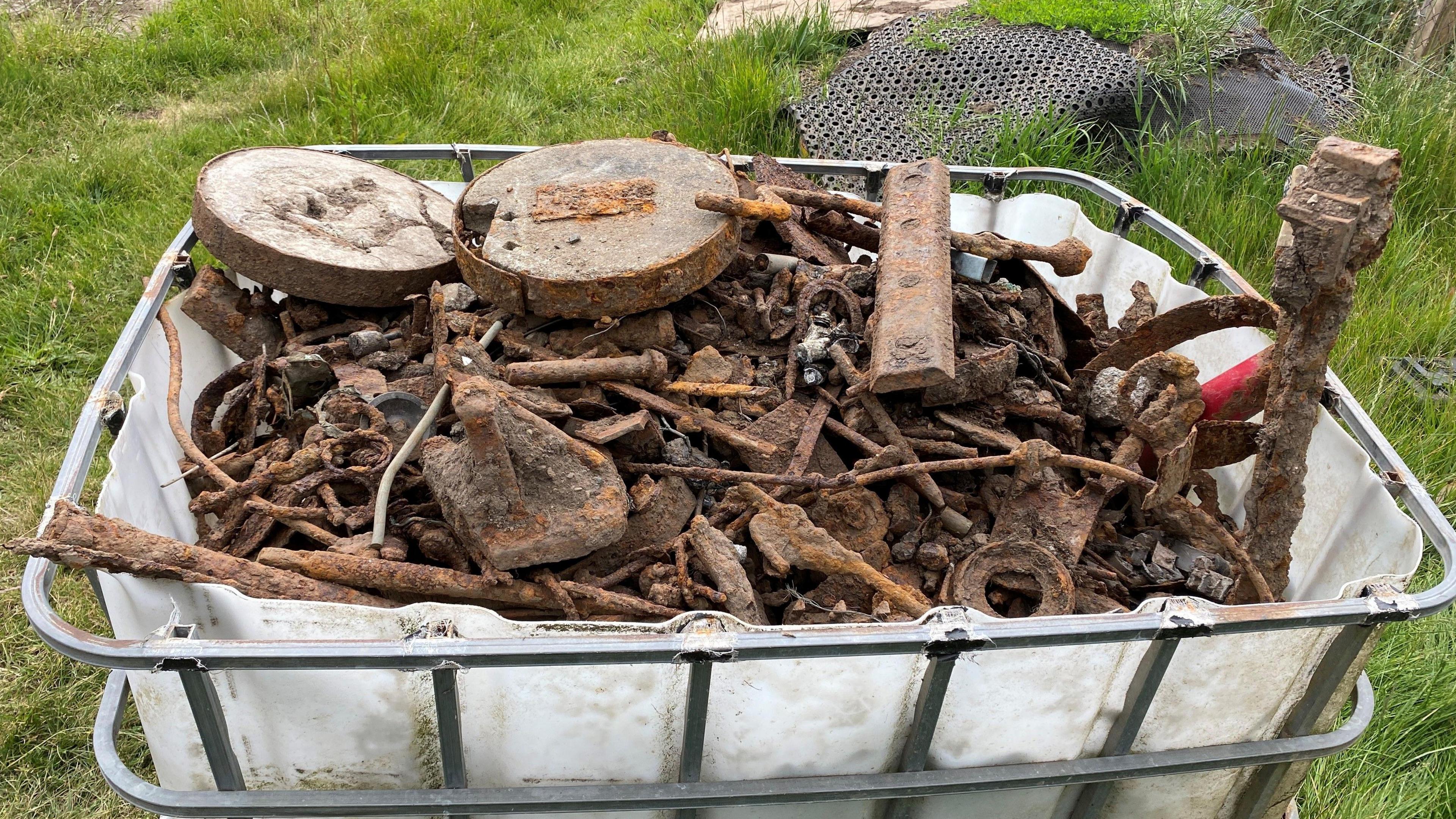
Handheld detectors were used to scan the park and a huge amount of scrap metal was removed
Brimstone was to spend a further three weeks at the playpark, using a handheld detector to survey the whole site and uncovering a huge amount of scrap metal alongside a final total of 177 bombs.
One theory was the bombs had been buried by the Home Guard, a British volunteer military organisation set up to defend against potential German invasion.
But Alan Sture, from Glendale Local History Society, believes it could have been the work of regular soldiers.
"This was a really important training area for the military and well defended," he says.
"There were 2,000 military personnel stationed at RAF Milfield north of Wooler alone."
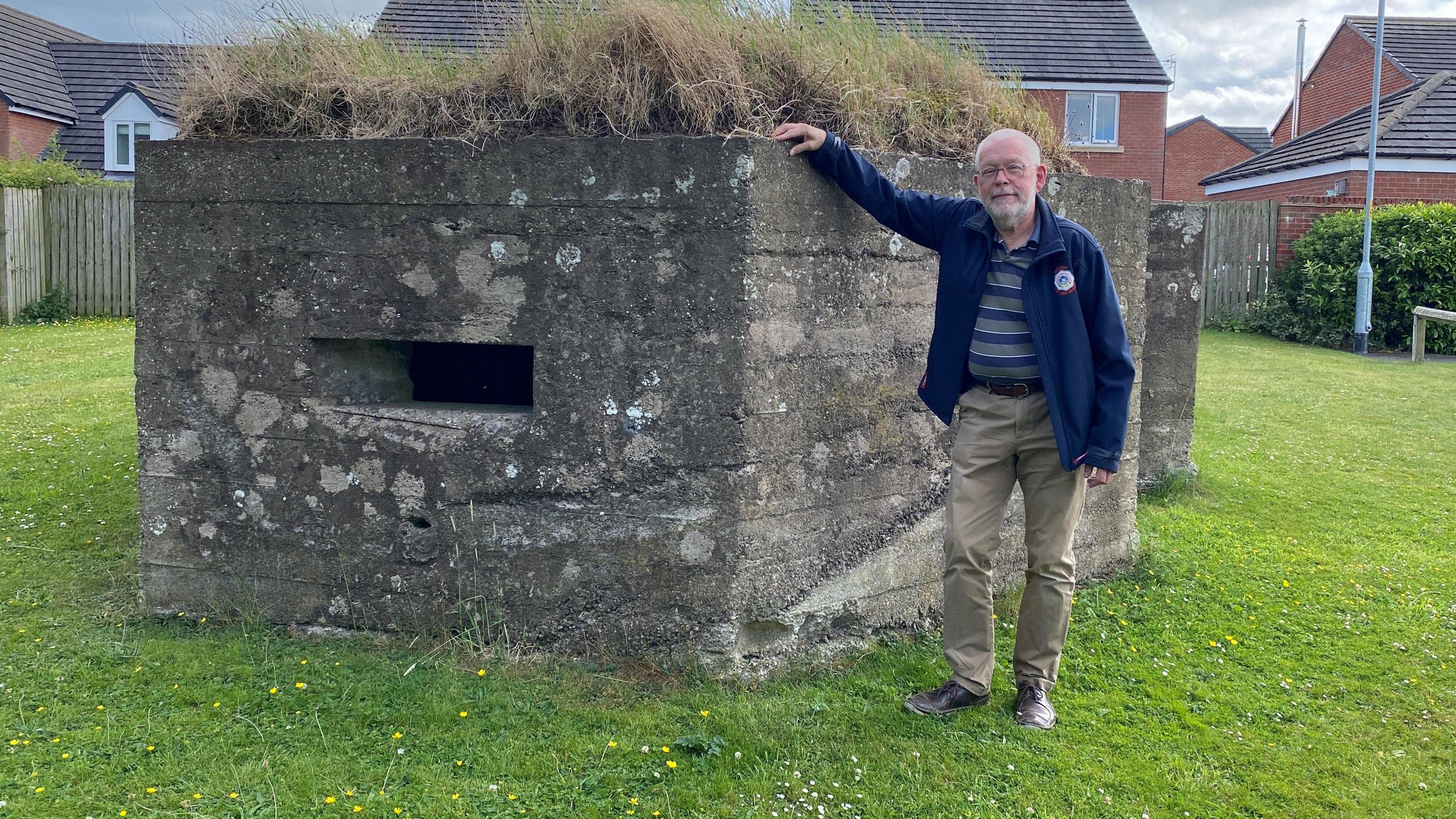
Local historian Alan Sture says Wooler was well defended by a ring of pillboxes and an important training area for the military
Alan is also sure there was an ordnance depot on the site during the war, with deliveries of munitions and supplies arriving via a spur from the Alnwick to Cornhill railway line.
The short stretch of track and the depot buildings are visible in a 1948 aerial photograph and are described in archive interviews with locals Mattie Fairnington and Maurice Hardy who were teenagers during the war.
In the 1981 recordings made by Glendale Local History Society the pair discuss their memories of "loads of troops coming and going" and "an ordnance depot" on Scotts Park.
"You know the part that's the playground now," Maurice Hardy says. "That was all fenced off."
"There was a lot of heavy stuff always coming in," Mattie Fairnington adds.
Further evidence of military use of the site came from researchers at Brimstone who identified wartime prefabricated metal structures known as Nissen huts.
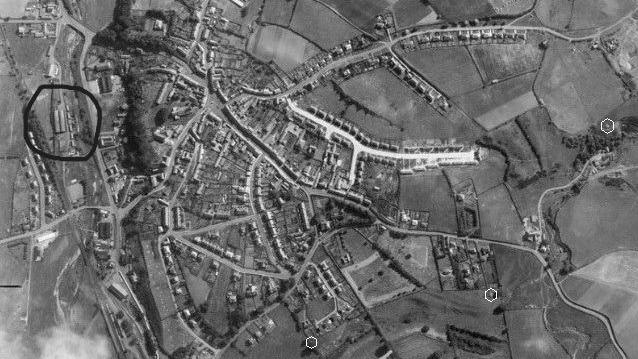
A 1948 image of Wooler shows military buildings near where the playpark was later built
Weapons were stockpiled in huge quantities during the conflict and then had to be disposed of, with much just dumped in the sea.
David Alexander, professor of emergency planning and management at University College London, says there was "millions of tonnes of unwanted ordnance all round the world" and "health and safety just didn't exist" in 1945.
In a period of post-war exhaustion, as Prof Alexander explains: "It would just have been 'let's get rid of it'.
"I mean, bombs had been going off for six years."
Colin Durward, who runs Blyth Battery, a set of wartime defensive structures on the Northumberland coast, says he "wasn't surprised at all" when he heard about the bombs buried in Wooler.
The museum has many practice bombs dug up across the county.
"Some of the old soldiers used to tell us stories of what they buried at the end of the war," he says.
"Things like a 3-inch mortar nobody wanted and thousands, probably millions, of rounds of ammunition.
"There was just tonnes of it stuck in the ground."
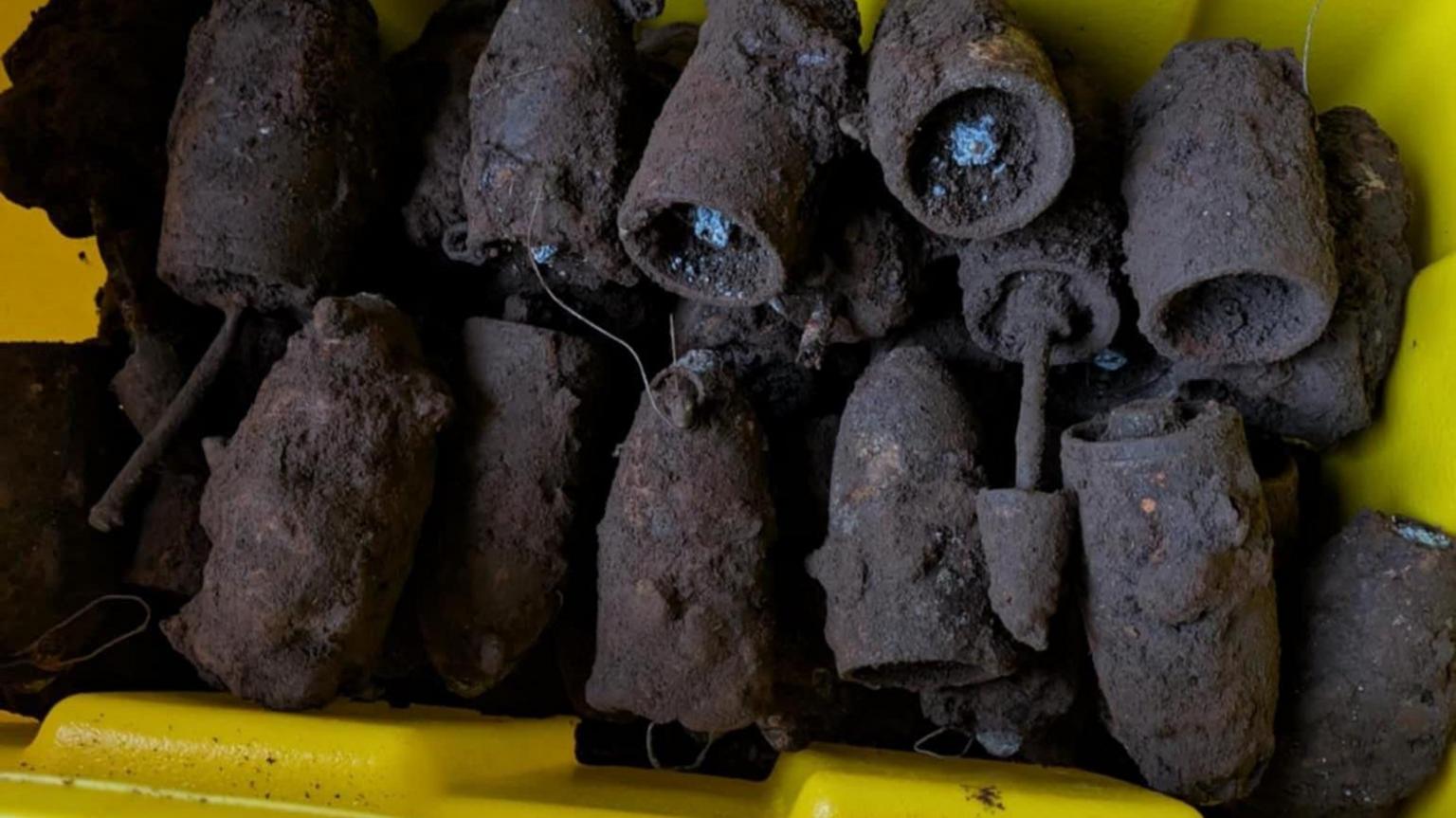
Bombs away: The 177 devices no longer lurk under the swings of Scotts Park
The park reopened on Friday lunchtime and, for councillor Mark Mather, born and bred in Wooler, it is a "huge relief".
"This was my local playpark, I was one of the kids running around on top of those bombs, just nine inches below my feet.
"It's been such an emotional roller-coaster.
"I don't think we'll ever find out for sure who put them there, or why, but I'm just so glad they're no longer down there."
Follow BBC North East on X, external, Facebook, external, Nextdoor and Instagram, external.
Get in touch
Do you have a story suggestion for BBC Tyne?
Related stories
How dangerous are unexploded bombs?
- Published11 August 2015
More WW2 bombs found under children's playpark
- Published10 February
'I couldn't play on beach because of landmines'
- Published2 December 2024
Buried 'WW2 defences' appear on beach
- Published20 November 2024
Related internet links

Get our flagship newsletter with all the headlines you need to start the day. Sign up here.